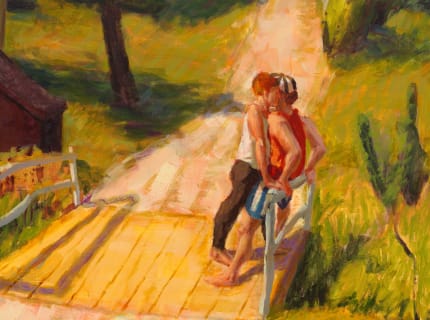Hugh Steers included in the group exhbibiton Macho: Representing Masculinity at ANOTHER SPACE in New York.
ANOTHER SPACE's press release follows:
ANOTHER SPACE is pleased to announce Macho: Representing Masculinity, a group show that explores constructs of the masculine code. The exhibition is conceived as a sequel to ANOTHER SPACE’s 2018 presentation of The Second Sex, a selection of works from the Estrellita B. Brodsky Collection that examined radical and feminist art practices in Latin America.
Macho considers the ways in which artists have questioned male identity as an absolute, whether through portraiture, self-portraiture, humor, or pathos. Divided into three overlapping themes, the show brings together works by over 25 multigenerational artists from Latin America and its diaspora, the Caribbean and the United States, from the 1940s to the present.
A first group of works surveys the formation of heteronormative ideals of manliness through rituals of masculinity. Within this group, works such as Richard Prince’s Untitled (Cowboy) (1980-84), an icon of ruggedness, Hank Willis Thomas’ Fair Warning series (2012) that refers to advertising subtexts insinuating phallic prowess, as well as Alfredo Boulton’s seductively posed figures, emphasize the stereotypical “ideal male” in the context of contemporary commercial culture. Centered on portraiture, the role of the camera and cinema to construct and deconstruct codes of masculinity is further emphasized by Robert Mapplethorpe’s iconic 1976 photographs of Austrian bodybuilder (and later, governor of California) Arnold Schwarzenegger and of Bob Paris.
While Fernell Franco’s 1985 photograph of men playing at billiard clubs illustrates the concept of leisurely male camaraderie, in the work Sip In (2019), Hernan Bas turns his attention to a subtle yet powerful act of defiance that marked the early days of the gay liberation movement in the United States. Bas commemorates the 1966 “sip in” that took place at the Julius bar when three young men dressed in suits were refused service for being openly gay. This form of affirmation is echoed in works such as Feliciano Centurión’s 1994 embroidered blanket Estoy Vivo, which addresses the invisibility of homosexuality and the impact of the AIDS epidemic. In parallel, Hugh Steers and Félix González-Torres evoke narratives of intimacy and illness at a time when the two were severely intertwined.

